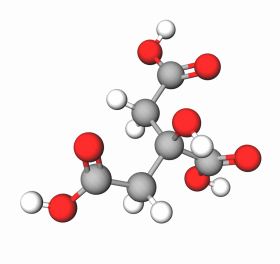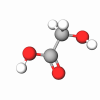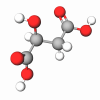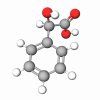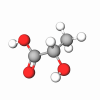Citric Acid is an alpha-hydroxy acid (AHA) found in many fruits. It has a polar molecule and can disrupt the coherence of corneocytes of the epidermis. This process is called the chemical peeling type of exfoliation, eliminating dull and old cells from the skin's surface.
Firming
Studies found that CA enhances collagen I and procollagen II production, improving skin firmness and elasticity. In addition, it increases the cell migration and renewal rate by inducing apoptosis through the mitochondrial pathway eliminating sun-damaged epidermal cells. Also, Citric Acid at high concentrations (20%) may improve the thickness of the epidermis and enhance amounts of GaGs in UV-damaged skin.
Energizing
Citric Acid is one of the critical members of a cell's primary energy production process called the Krebs cycle or CAC (Citric Acid Cycle), where it oxidized until CO2 with the generation of ATP molecules (fuel for cells or energy storage molecules). So, it energizes cells boosting their functions, proliferation, and renewal.
Moisturizing
Citric Acid is one of the essential compounds NMF (natural moisturizing factors) in the skin, which can bind water molecules, enhancing water retention and lessening transdermal moisture loss. As a result, it hydrates skin, providing volume and density, smoothing fine lines and wrinkles, and improving skin suppleness.Chelating
Citric acid also acts as a chelating agent used to sequester metal ions, which can contribute to discoloration and decrease preservative effectiveness.
CA is a superstar ingredient with numerous benefits that expose a fresher, more youthful, and healthy appearance.
Ingredient products
Citric Acid is naturally produced in various amounts by all types of citrus fruits. Common natural ingredient sources include lemons, limes, oranges, and grapefruits. It acts as a natural skin scrubber in our cleansers and is used to adjust the pH and extend the shelf-life of skin care formulations.
